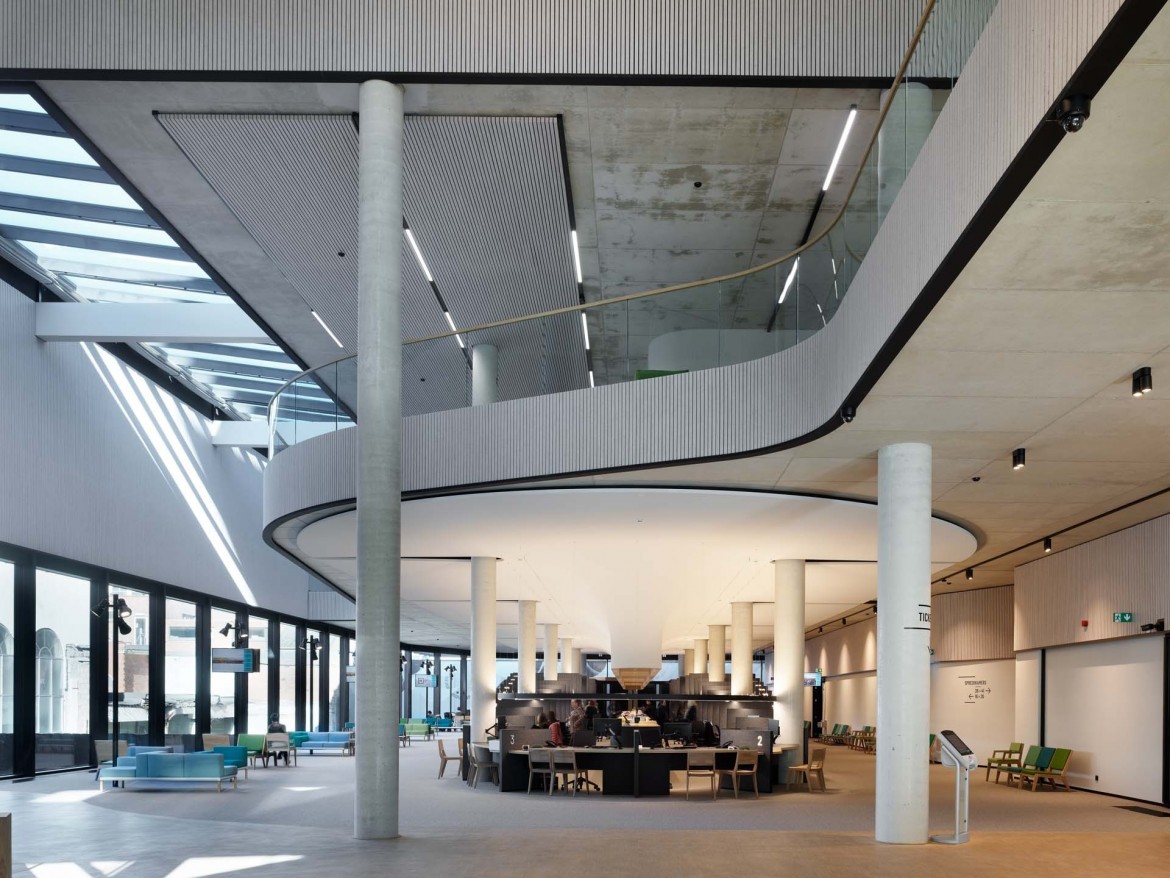Hunter Douglas Architectural’s award-winning Heartfelt® modular felt ceiling system is now available for walls.
Two years after it launched the world’s first modular and linear felt ceiling system, it has successfully applied the unique system to walls, creating a warm and inviting ambience to a space.
The technical experts at Hunter Douglas Architectural created a locking device on the carrier system so that it could be used on straight walls. A solution for curved walls has also been engineered.
Pieter van Rees, Business Development Manager, Ceilings, said an extra, small profile was added to the carrier system, which pushes the wall panels down and outwards, fixing them in place securely.
The additional application means architects and interior designers now have the exciting option to include both a felt ceiling and wall on projects, creating a seamless visual effect.
“When we first developed this product as a ceiling, we thought it would be fit for a wall,” he said. “Having developed a carrier system for it, we are pleased with how it performs and we believe it will be a popular choice in many settings.
“It is a forgiving material, so even if it is bumped into, it bounces back, and it also creates a warm ambience. While the ceilings are the dominant acoustic absorber, the HeartFelt® wall acts as a local additional sound treatment, absorbing sound up to two metres.”
The wall panels come in lengths of 1000mm-6000mm and dimensions of 40 x 55 mm available in five shades of grey and five earth tones.
Sixteen standard carrier modules offering different joint widths means there are myriad ways of installing the system to suit the space.
The linear felt panels are made of non-woven, thermoformed PES fibres and because they have no finishing coat, they are 100% recyclable. The aluminium carriers and galvanised steel hangers are also 100% recyclable. The total system has been certified C2C bronze level.
The Hasselt City Hall in Belgium is the first building to use HeartFelt® as a wall application, and it has been used to stunning effect across 4,000m2.
In the building’s public hall, a 40m length of wall, ranging in height from 8.5m to 4.0m, was covered with vertically placed panels and these continue for another 22m into the back office. The wavy parapet around the large mezzanine in the public hall also has vertically mounted panels. In the offices, the walls above the wall cabinets are lined with horizontal panels and this application partially merges into the ceiling.

